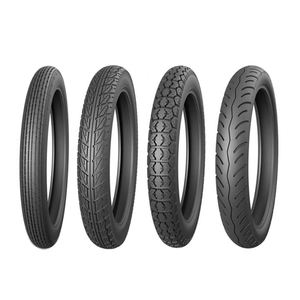Our Motorcycle Boots Diaries
Wiki Article
The Best Strategy To Use For Motorcycle Boots
Table of Contents3 Simple Techniques For Motorcycle BootsThe 3-Minute Rule for Motorcycle BootsThe Facts About Motorcycle Boots UncoveredThe Buzz on Motorcycle BootsWhat Does Motorcycle Boots Mean?The Definitive Guide to Motorcycle Boots
The key parts of modern-day motorbikes are offered below.; this has actually been used all via motorcycle background yet is now coming to be much more usual.It was commonly out of favor and typically pertained to as a bad concept at the time. Today it is a used on some "thumpers" (single-cylinder four-strokes) that normally have dry-sump lubrication calling for an external oil storage tank. It has actually since gotten some prestige in the modern custom-made bike globe too since of the room savings it can afford and the recommendation to an earlier period.
Any type of storage space container for fuel may be so called, the term is usually applied to part of an engine system in which the fuel is stored and moved (fuel pump) or released (pressurized gas) right into an engine. A motorbike fork is the part of a motorbike that holds the front wheel and enables one to steer.
What Does Motorcycle Boots Do?
The 'fork' on a bike consists of numerous elements. The triple trees (additionally understood as yokes) hold the fork tubes (which contain the fork springtimes), and are fastened to the neck of the structure by the steering stem.
, which calls for both lubrication and adjustment for elongation (stretch) that occurs through wear. The lube is subject to being thrown off the fast-moving chain and results in gunk and dirt build-up. Chains do weaken, and excessive wear on the front and rear sprockets can be dangerous.
Conventional roller chain-drives suffer the potential for vibration, as the effective distance of activity in a chain and gear mix regularly alters during the transformation ("chordal action"). If look these up a drive gear revolves at consistent RPM, then the chain (and the driven sprocket) must accelerate and decelerate constantly. The majority of chain-driven motorbikes are fitted with a rubber bushed back wheel hub to remove this resonance issue.
These chain oilers vary in elegance, but all add considerably to the life of the chain. The custom-made of lubing by immersing the chain in a tin of hot oil stopped in the early 1970s, as soon as most chains had rubber "O'-rings.
How Motorcycle Boots can Save You Time, Stress, and Money.
They are not as long lasting when subjected to high horse power as a chain. You can not change the size and adjustment final drive proportions as easily as chains. And need larger pulley-blocks compared to chain gears to get an efficient final drive ratio.A shaft-drive is normally totally enclosed; the visual sign is a tube expanding from the rear of the transmission to a bell real estate on the rear wheel. Inside the bell real estate a bevel equipment on the shaft mates with one more on the wheel mount. This setup is remarkable in regards to noise and tidiness and is basically maintenance-free, with the exception of occasional fluid changes.
The additional equipment sets are a go to website resource of power loss and added weight. Practically all high-performance racing motorbikes utilize chain-drive since they are the most mechanically efficient sending power to the back wheel.

The Of Motorcycle Boots
There are tires made for dirt bikes, touring, sporting activity and cruiser bikes. Dust bike tires have knobbly, deep treads for optimum grasp on loose dirt, mud, or crushed rock; such tires tend to be less secure and noisier on paved surfaces.Visiting tires are usually made from a more difficult rubber substance for better toughness, these might last longer however often tend to provide less outright hold contrasted to sports tires at optimal operating temperatures. Visiting tires typically provide a lot more grasp at reduced temperatures and can be extra suited to riding in cool or winter season conditions where a sporting activity tire might never ever reach its optimum operating temperature level.
These tend to have stronger sidewalls as they are usually fitted to much heavier equipments. Motorsport or competing tires supply the highest of levels of grip. Due to the heats at visit the site which these tires usually operate, utilize outside a racing atmosphere is risky, commonly these tires do not reach their maximum temperature which provides less than ideal grip.
About Motorcycle Boots

There are lots of brake-performance-enhancing aftermarket parts available for the majority of motorbikes, including brake pads of differing compounds and steel-braided brake lines.
Report this wiki page